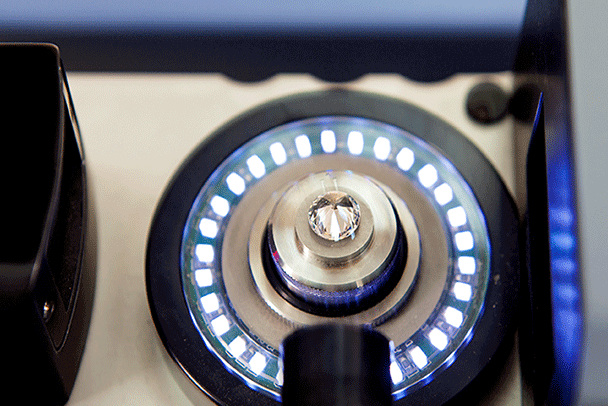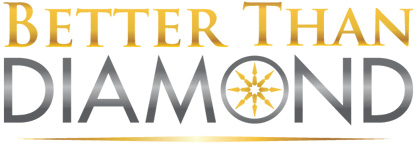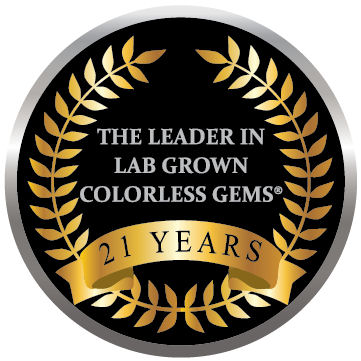- Home
- Takara Lab Diamonds
- Lab Diamonds - Facts and FAQ
Categories
- Amora Gem
- Takara Lab Grown Diamonds
- Overnight Earrings
- Asha® Diamond Simulant
- Rings
- Earrings
- Bands
- Forever Brilliant Moissanite - Certified
- Moissanite
- Asha® Dangle Earrings
- Asha® Stud Earrings
- Pendants
- Avarra Lab Grown Rubies
- Avarra Lab Grown Alexandrite
- Avarra Lab Grown Colombian Emeralds
- Avarra Lab Grown Sapphire
- Amethyst (Natural Bolivian)
- Miscellaneous
Popular Brands
Our Newsletter
Lab Diamonds - Facts and FAQ
With the rapid growth of our Takara Super Ideal H&A lab diamond sales, we're seeing a number of common questions about lab diamonds.
Thus, this page is designed to address the Top 10 most common questions about lab diamonds. This page is in progress, so you are welcome to post on our message boards or contact us with questions not answered here!
1 - Are lab grown diamonds "real" diamonds?
100% Yes! Lab diamonds are chemically, physically and atomically "real" diamond (and often 'purer' diamond crystal than mined ones).
The analogy is wild grown tomatoes versus tomatoes grown in a greenhouse. Tomatoes from a greenhouse are just as 'real' as ones picked from a wild tomato plant (and pretty much all you'll find at your local grocer), and similarly, diamonds grown in a diamond greenhouse are just as real as those wild mined from the Earth.
2 - Will a lab grown diamond, like the Takara lab diamonds, test positive on a diamond tester?
100% Yes! See question 1 above, but since lab diamonds are "real" diamonds, they will test positive on any diamond tester.
3 - How exactly are lab diamonds grown in a lab (or diamond greenhouse)?
There are two ways to grow a real diamond. The first way replicates how diamonds grow under the earth and uses high pressure and high temperature . This is known as HPHT. This method is more costly overall for larger sizes (maintaining high pressure is difficult and hard on the equipment) but produces the highest color (D, E, F) and highest clarity lab diamonds.
The second way replicates how diamonds grow in outer space - high temperature but ultra-low pressure. This is known as CVD (chemical vapor deposition). As the name implies, gasses are used and heated to extremely high temperatures in a vacuum.
In general, the CVD method produces lower color grades (G-M) and on average, lower clarity than the HPHT method. However, it is cheaper and overall a faster production method. Technically, colors up to E color can be produced using CVD but requires *extremely slow* growth to get colorless. By contrast, G-H-I-J colors can be produced much more quickly and thus for less cost.
For reference, all our Takara Super Ideal lab diamonds are grown with HPHT process, and hence why we have a high percentage of D, E, and F colors.
4 - Your Takara lab diamonds are all cut to Super Ideal Hearts and Arrows. What does that mean in terms of specifics?
All of our Takara's are cut to Super Ideal H&A (Hearts and Arrows), and thus better cutting/beauty than 99% of all mined diamonds. In terms of angles and details, here's the cutting angles and specifics as verified by the latest set of Takara diamonds and graded via OGI HD analysis at NAGL diamond grading labs:
Table: 56-57%
Crown angle: 34.25 - 34.55%
Crown height: 14.7 -15.30
Pav angle: 40.74 - 40.76
Pav depth: 42.45 - 42.49
Depth: 61.1 - 61.3%
Star length: 50-53
Lower girdle: 76-77
You can verify that our specs are in the precise, optimal range for Super Ideal H&A diamonds here: Hearts&Arrows.com
5 - How do I know I'm getting a real, true lab diamond rather than a CZ that's unethically advertised as a "lab grown diamond"?
Easy - for any sizes over .50ct, ensure your lab diamond comes with an independent, diamond grading report! CZ sellers will not be able to get a diamond grading report, as the product is a CZ, and a simple diamond test at the grading lab and weighing it will verify if it is diamond or not. (CZ is about 2x as heavy as diamond for reference).
All of our Takara lab diamonds over .50ct come with an independent grading report. Smaller stones can be tested at a local jeweler for reference, via a thermal diamond and moissanite tester.
6 - You cut your Takara lab diamonds to AGS-000 standards, but AGS labs does not currently grade lab diamonds. How do you know it's really equivalent to AGS-000 standards?
All diamond grading labs use either OGI or Sarin HD light measurement systems to build a 3D model of any diamond in grading. Both AGS and GIA sell plugins that can be used in these systems to produce the equivalent grade that respective lab would give. Thus, while our Takara lab diamonds are not graded at AGS proper, we can verify they meet the AGS-000 cutting specifications via the AGS official plugin for OGI and Sarin.
For reference, here is a photo of the Sarin system - we have one at our diamond cutting facility as a check so we already know how it will grade even before shipping in for actual grading and independent certification.

<<page still in progress - feel free to post more questions on our message boards to be answered here - http://talk.jewelry


